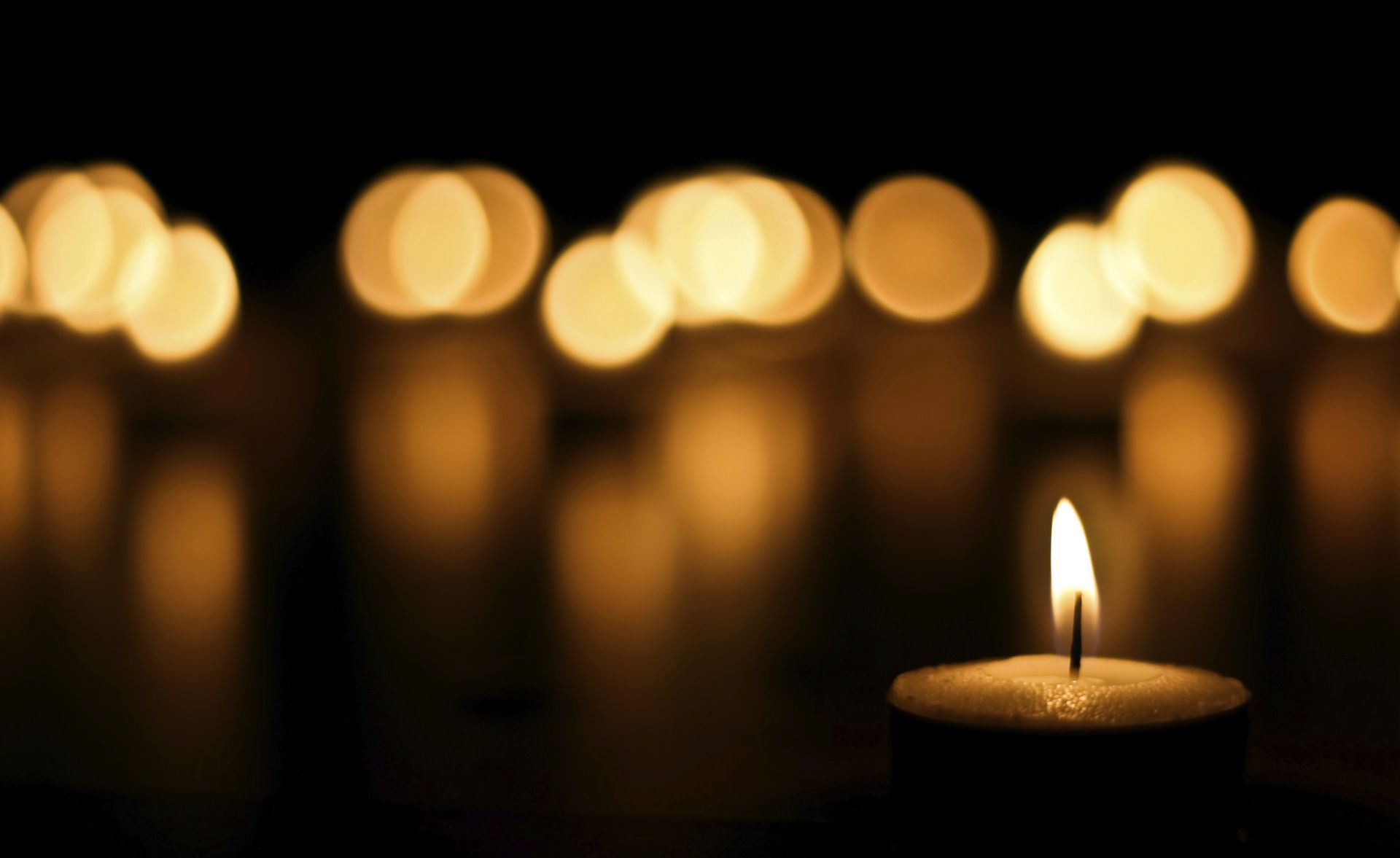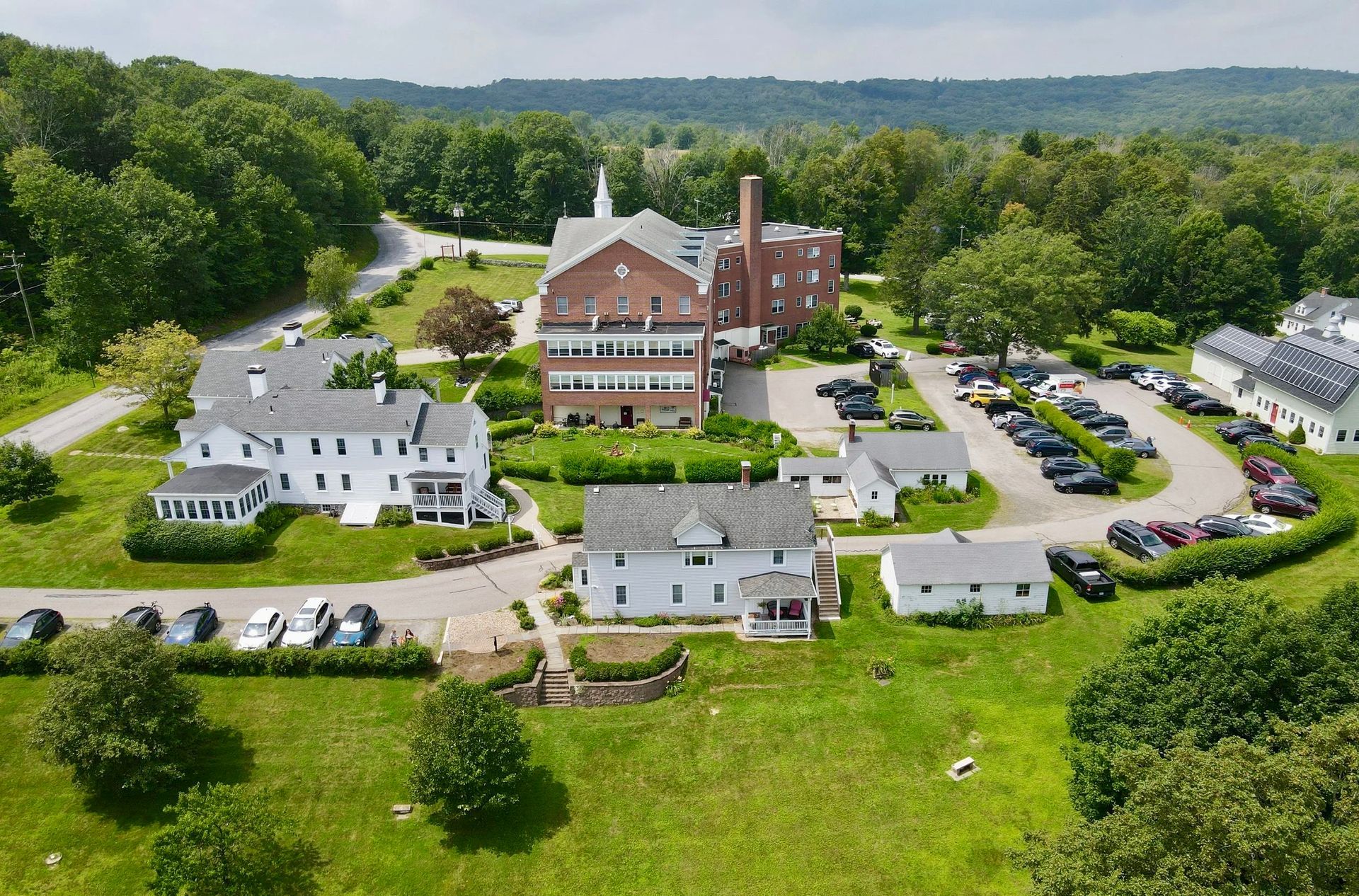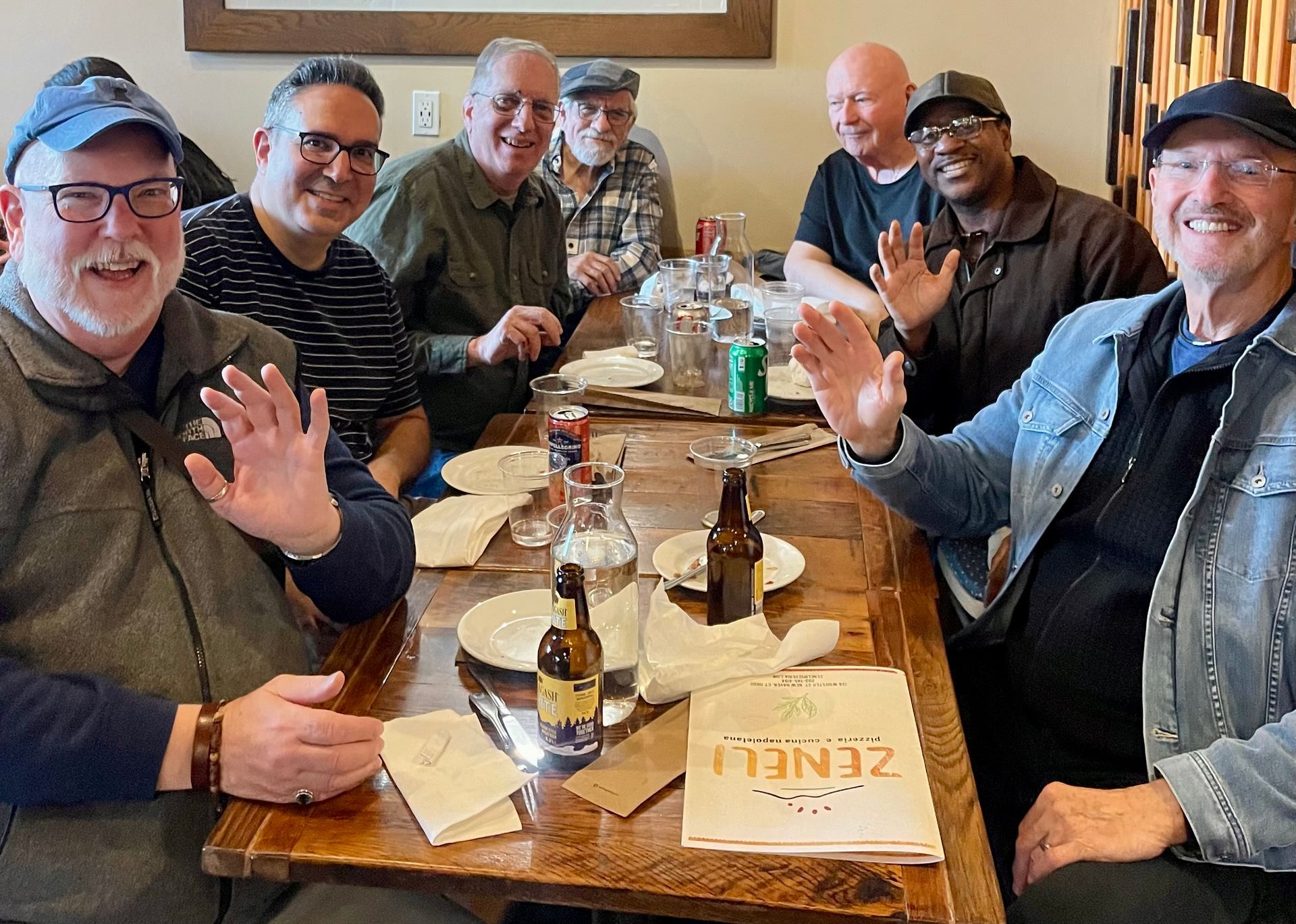Blog

I got the idea from Helen, who’s reads everything, sees everything, goes everywhere – and is as New York as a Metro card. Helen, my Manhattan friend of many decades, and two of her friends have a Saturday morning ritual of seeing the week’s best new movie release. Tired of never having seen any of the films nominated for Oscars, I decided to follow their practice and every Friday see a movie and wallow in a huge bucket of popcorn with refills. I call my adventure Friday Flicks. There’s one big “But . . . .” Helen and her pals live in Manhattan, a couple of subway stops from some of the country’s best independent film houses: Angelika, Film Forum, the IFC Center, Quad Cinema. New Haven, on the other hand, has no movie theaters. Not one, in a city that calls itself the “Cultural Capital of Connecticut.” Within a short drive from New Haven are two cinemas – both owned by Cinemark and both playing releases straight from Hollywood. The movies I’ve attended since I started Friday Flicks remind me why I stopped going to the movies years ago. Mostly, they are comic books on 35mm celluloid. The Marvel Cinematic Universe and other franchises have generated enormous box office success, but their formulaic storytelling and characterization expose their lack of artistic merit. Critics like Manohla Dargis of The New York Times have noted that while these films often deliver spectacle, they lack the depth and innovation of art. Dargis says: “Franchise films, while visually striking, often sacrifice narrative complexity for the sake of lucrative sequels.” What should going to the movies do for you? Film critic A.O. Scott says it well: "The best films, whether they are big-budget blockbusters or indie gems, reveal something profound about the human condition." During the past months of my movie-going, I’ve too often exited the theater thinking, “At least the popcorn was good.” For example: • I didn’t understand what the hell was going on in “The Phoenician Scheme” but still remember Benicio del Toro’s hangdog scowl. • I don’t remember a thing about “Eddington” or “Battle after Battle” and “After the Hunt.” • I walked out of “The Conjuring” and “Now You See Me” – and finished my popcorn in the car. The rise of digital media and streaming platforms may transform the way audiences consume films because of their diverse storytelling styles and genres. Netflix and Amazon Prime Video have opened a space for unconventional narratives that challenge traditional Hollywood formulas. Film scholar J. Hoberman finds that the flexibility of streaming platforms represents a new frontier for artistic expression in film: “The streaming era allows for longer narratives and deeper character explorations, akin to the best traditions of literature and theater." And we still have independent cinema that provides a venue for artistic risk-taking by way of unconventional narratives and emphasis on character development over spectacle. Richard Brody of The New Yorker notes that true artistry in film often resides outside the Hollywood system:“Independent filmmakers have the freedom to challenge societal norms and explore complex human emotions without the constraints of box office predictions.” I don’t own a television, so when I want to watch a movie at home, it’s coming at me on a thirteen-inch laptop screen. So streaming platforms, for me, are not movies. Also, the movie experience must, must involve popcorn – the kind you get only at a movie theater. I’m afraid my future Friday Flicks adventures may take me to Manhattan. Which ain’t a bad way to spend a Friday.

In the rush of the moment, in my wearying impatience with whatever was in the way of my plan, I forgot – despite the Christmas carols playing in the background. I forgot what C.S. Lewis warned us, that there are no ordinary people, that we have never talked to a mere mortal. Everyone we meet carries the weight of eternal destiny. I was in the holiday-crazed ShopRite supermarket in Stratford, Connecticut, with my younger daughter, Julie. We had come from her post-surgical procedure at Yale-New Haven’s Smilow Cancer Center and stopped at the supermarket to pick up just a few pantry items. We were looking for the “10 Items or Less” checkout lane, but, of course, there was none. So we chose to join the shortest line. But we soon saw that the queue was at a standstill because of an elderly man slowly and meticulously counting out coins to pay for his purchases. He was obviously flustered and confused, repeatedly laying his coins on the counter, stooped over, his mouth agape. Then he stopped to peer into his sack of groceries to see which items he might remove in order to lower the price. I instinctively made a snarky comment to my daughter. But the guy second in line, immediately in front of us, did something else. He spoke to the clerk who had been patiently standing there watching the old man trying to count up enough money to pay the total. He told her he would cover the guy’s groceries. To the tune of $76. The old guy thanked him profusely, shook his hand, and left. I thought, one of these two men is Christ. But I don’t know which. It’s in Matthew's Gospel that Christ identifies strongly with the vulnerable: "For I was hungry and you gave me food, I was thirsty and you gave me drink, I was a stranger and you welcomed me . . .” Saint Paul reminds us we are "members one of another." Mother Teresa made this vision her cornerstone, seeing Christ in his most “distressing disguise” – the dying poor whom she lifted from Calcutta's streets. This is the mystical reality – that each of us bears the image of the divine – not only of Christianity, but other spiritual traditions as well. The Zen namaste has the divine in me saluting the divine in you. Judaism teaches that humans are created in the image of God, a concept from Genesis that signifies human dignity, sacredness, and a responsibility to reflect divine qualities like love and generosity. Islam holds that we’re endowed with Godly attributes like soul, reason, and free will, enabling us to be God's representatives on Earth. I left the supermarket last week with not just some staples, but also with a sackful of shame. Because after a life-long identification as a Catholic Christian, it never crossed my mind to offer a handful of change to help the old man buy food. Instead, I ridiculed him before my daughter. And I still don’t know which of the two men in front of me was the personification of the divine that day – the stooped old man with his meagre handful of coins, or the gentleman who lifted him from his humiliation. I pray that I learned my lesson. (Image: The blanketed figure on a park bench is known as the Homeless Jesus. The statue, at Roberts Park United Methodist Church in Indianapolis, is a permanent reminder of homelessness. It was created by Canadian artist Timothy P. Schmalz.)

It’s not working for me, this mail-order-bride business. At least this is what online dating services seem to be: shopping for love on Amazon and expecting next-day delivery. It’s been ten years since my wife of fifty years succumbed to breast cancer. I’ve lived a solo life since then with no dating, comfortably enjoying and nurturing close relationships with my two daughters. I even relocated from Honolulu to New Haven so I could be a short drive from each of them. I think I was driven to consider a dating service after my wife’s sister died of cancer herself. She and I had gotten into a weekly routine of long telephone conversations when we would kvetch about everything from kids to pets to politics. With her death, I lost that connection. So out of simple curiosity, I decided to “just see what’s out there.” I signed on to a six-month membership in eHarmony. eHarmony puts you through a lengthy personality test that determines how you match with others, calculated against their personality profile – your “compatibility score.” According to eHarmony, most of their members are seeking not a fling but a long-term and meaningful relationship. I didn’t realize it until I got into the guts of my self-analysis, but this seems to be what I, too, am after. Here’s what I wrote as my profile: I'm a retired widower who can't sit down. I publish books, a blog, and write poetry that's appeared in dozens of literary journals. I work with the ACS to teach patients to write poetry to ease the stresses of cancer, and I conduct Zoom classes for the public on writing healing poems. I don't look my age, am reasonably fit, personable, and know how to make people laugh. At various stages in my life, I've been a puppet, a pauper, a pirate, a poet, a pawn and a king. But I have a vacuum that wants to be filled by a confidante. A confidante. Hmm. My six-month subscription is ending next month with no results. I’ve received more than a dozen likes and messages from women I match with, but I haven’t responded to any of them – for a number of rather ridiculous reasons: • She lives too far away • Her name is the same as my daughter’s • She identifies as a political conservative • She keeps a pet • She plays golf • She loves to write (One psychotic writer in the house is enough.) • She’s looking for someone to share “all that life has to offer” • She’s a realtor I’m savvy enough to know the laundry list above has nothing to do with my inability to connect. The whole dating service concept is farkakte – messed up. When I met the young woman who became my wife, I didn’t ask for her political position. I didn’t care if she had a dog. In fact, she could have checked all the above items, and her kiss would have been just as sweet.

Tomorrow the Christian world will begin its annual vigil for the birth of the Christ child on December 25 – Advent. As the season beginning the Catholic Church's liturgical year, Advent (from, ad-venire in Latin or to come to ) encompasses the four Sundays that culminate in the celebration of Christmas. Like Lent, Advent is a period of penance – in the sense of preparing, quieting, and disciplining ourselves for the full joy of Christ’s nativity. Mercy by the Sea Retreat and Conference Center in Madison, Connecticut, asked me for a poem to help dress their Advent 2025 website. I obliged by writing a poem I titled “Advent.” Poet Henri Cole has likened poetry to holding a seashell to your ear and listening for the message intended just for you. I invite you to hold that seashell to your ear as you read my poem, and hear the message intended just for you: Advent By Peter W. Yaremko We live in dim light. Brightness forever fills the next room, or so it seems, while ours is to wait at a window and watch. Difficult to teach kids to prosper in such shade, much less be patient. Difficult for us to discern so much as yesterday, much less tomorrow. But for the watchful, dark gives way to dawn soon enough. Teach them this certainty. The light comes to us. Yes, the light always comes.

I'm sharing with you on this 2025 Thanksgiving Day an essay from a 1928 issue of "America" magazine. I’ve submitted poems to this publication numerous times over the years – all rejected. After reading the flowery and obscure language of this piece, I doubt I will submit my stuff anymore. Thanksgiving Day By The Editors THE ancient and honorable festival which we call Thanksgiving Day is at hand. In the fact that in the United States alone does the civil power set aside a day on which the people are invited to return thanks to Almighty God, the religious-minded citizen will find cause for gratification. The custom undoubtedly had its origin in pioneer New England, where under an extreme of Puritan influence it usurped for many years the place of Christmas Day. Joel and little Deborah might gambol it, in the grave fashion befitting a Puritan festival, on Thanksgiving Day, but the poor little creatures knew nothing of the Friend of children in His crib at Bethlehem. Happily, however, even in New England we can now turn our minds to God in grateful remembrance on the last Thursday in November, and feel our hearts respond with deeper gratitude as we contemplate God’s great Gift to the world on Christmas Day. Christian folk will note with pleasure that within the last decade and a half Thanksgiving Day has assumed a more definitely religious tone than some of us knew in our childhood. Once it was a day for feasting merely, and without cakes, ale, and our national bird, the turkey, the festival was sadly incomplete. With these creature comforts at hand, the beginnings of a day of solid comfort were beyond hazard. But Mr. Volstead has deprived us of ale, that creature baptized by centuries of Christian usage, and the food profiteers have made the once abundant turkey the peculiar comfort of the opulent gullet. The rest of us must procure such meats as are in keeping with our lean purses, and season the dish liberally with thankfulness. The custom of opening the churches for religious exercises is becoming common. There was a time when to throw open the doors on any morning save the Sabbath, savored of popery and the Gunpowder Plot. That era is passing as it should. Thanksgiving Day may be very properly celebrated with feasting, but its real purpose is lost unless we go down on our knees to return thanks to Almighty God for His countless blessings. Governor Smith expressed one part of our duty admirably in his speech of November 13. “America cannot be unmindful of the blessings that have been showered upon her by an Almighty and Divine Providence,” said the Governor. “No one can read our history and be unmindful of the proclamation of the President of the United States, asking that on Thanksgiving Day, in grateful appreciation, we offer thanks by prayer, and at the same time pray for a continuance of that benediction.” But we can go beyond this. For every Catholic the proper celebration of Thanksgiving Day will include, when possible, the bestowal of alms, attendance at the Holy Sacrifice of the Mass, and the reception of Our Lord in Holy Communion.

We’re coming up on the one day a year given over to gratitude. But what’s to be thankful for when you’re suffering with Stage 4 cancer? In a world that constantly demands more—more achievement, more consumption, more speed—it’s almost radical to pause, to look closely at the ordinary miracles of our lives, and to acknowledge the interconnected web of relationships, circumstances, and small mercies that sustain us. But that’s exactly what poet and author David Whyte says is needed: "Gratitude is a radical act of attention." We’re conditioned to focus on lack: what we don't have, what we haven't achieved, what we might lose. Gratitude focuses our attention from what is lacking in our lives to what is abundant. The practice of gratitude literally reshapes our brains. By consciously focusing our attention on the positive aspects of life, we rewire our brains to notice and appreciate the good, creating a more optimistic and resilient mindset. It’s as if our brains can be trained the way muscles are. For people living with advanced cancer – like the patients I work with at the American Cancer Society in New York City – gratitude is not an exercise in pretending everything is fine, but a link to what is beautiful and meaningful in life. There’s a ton of science testifying to the therapeutic benefits of practicing gratitude. Scientific studies consistently point to gratitude as powerful therapy that spans mental, cognitive, and physical areas: • Greater emotional and social well-being • Reduced depression • Enhanced overall mental health • Less anxiety • Better coping by reframing negatives in order to see the positive • Better physical health • Sleep and heart health improvement • Stronger immune system • Lower blood pressure All this just from saying “Thank You.” Then there’s poetry – which offers something science cannot: the language to articulate and share the grace of giving thanks. Like these lines from Rainer Maria Rilke: Let this darkness be a bell tower and you the bell. As you ring, what batters you becomes your strength. Poetry spotlights the overlooked. It distills truth from everyday experience. It notices the unnoticed. It changes not what we have, but how we observe what we have. It offers us a path to gratitude's transformative power. Here’s a caveat, though. Trying to force an attitude of positivity that dismisses genuine pain only creates additional suffering. True gratitude coexists with grief, fear, and anger. We can feel devastated by a terminal diagnosis and at the same time be grateful for the nurse who holds our hand. Psychologist Robert Emmons, a leading researcher on gratitude, encourages the practice of reflecting on moments of beauty, connection, and kindness – even in the midst of suffering. Gratitude is about transforming pain into a source of strength. Expressing our gratitude can even benefit the people around us. When we’re in pain but still choose to express appreciation – for care received, for time together, for life itself – we invite others to remain present rather than back away out of a sense of discomfort. Poet Mary Oliver, who died of cancer, says this: "To live in this world you must be able to do three things: to love what is mortal; to hold it against your bones knowing your own life depends on it; and, when the time comes to let it go, to let it go."

When we gathered for the first time on Friday evening, I looked at the circle of eighteen women from all walks of life and all singularities and knew in my heart that each of them could be categorized as the walking wounded. How does the old truism go? “Everybody you pass on the street has a story.” The good news, as articulated by psychologist Brené Brown: “When we deny our stories, they define us. When we own our stories, we get to write the ending.” These ladies had gathered to participate in my weekend program at Mercy by the Sea Retreat and Conference Center in Madison, Connecticut: “Writing for Wellness: Emotional Healing through Expressive Writing.” Their first assignment that evening was to write a poem about an emotional wound they wanted healed – or at least eased. I gave them no guidance on how to write what was, for many, their first-ever try at poetry. The next morning I explained: “At our opening session last night, I didn’t go around the room asking why you’re here, because I know you’re here looking for poetry to help with something that’s assailing your heart.” Perhaps the worst part of suffering an emotional trauma is believing we’re alone. We think nobody else could ever understand what we’re feeling. In his raw poem, “Alone,” Edgar Allen Poe wrote: From childhood’s hour I have not been As others were—I have not seen As others saw— And all I lov’d—I lov’d alone— We’re born alone and journey into death alone. What we’re not told is that every person's story is transformative, not just for them but also for those who hear it. Through shared laughter – or tears – we can come to accept the reality that our lives are interconnected. F. Scott Fitzgerald, author of The Great Gatsby , said: “That is part of the beauty of all literature. You discover that your longings are universal longings, that you’re not lonely and isolated from anyone. You belong.” How do you gauge the value of a weekend spent reading and reacting to some of the most moving poems ever written? Perhaps by tears shed and friendships formed? Because there were tears as well as hugs among the participants during the periods when they shared the poems they’d written. I witnessed friendships take shape during both the workshop sessions and conversation over meals. When we’re suffering emotional trauma from death, divorce, or a bad diagnosis, our emotions are near the surface. Poetry comes easily at times like this because writing a poem restores some of the control trauma has disrupted. The art of poetry – reading it or making it – enables us to tap into our innate creativity, feel safe, and form bonds with one another. One woman wrote and shared a poem about a friend she had made during the weekend. Lucille Clifton, poet laureate of Maryland, once said: “Poetry can heal. Because it comes from a heart, it can speak to a heart.” You know what else is worth noting? Studies show that tears triggered by sadness, grief, or distress contain higher levels of stress hormones and natural painkillers than tears of happiness or joy. Crying flushes stress chemicals from our body, explaining why we feel better after a good cry. Poet Ellen Bass says it so beautifully: The Thing Is to love life, to love it even when you have no stomach for it and everything you’ve held dear crumbles like burnt paper in your hands, your throat filled with the silt of it. When grief sits with you, its tropical heat thickening the air, heavy as water more fit for gills than lungs; when grief weights you down like your own flesh only more of it, an obesity of grief, you think, How can a body withstand this? Then you hold life like a face between your palms, a plain face, no charming smile, no violet eyes, and you say, yes, I will take you I will love you, again.

I have been invited to guide a weekend of Emotional Healing through Expressive Writing January 16-18, 2026, at Wisdom House Retreat and Conference Center in Litchfield, Connecticut. This comes on top of the healing poetry retreat I’m facilitating this weekend at Mercy by the Sea Retreat and Conference Center in Madison, Connecticut. Many of us are turned off to poetry because a high school English teacher thought poetry is about answers. Poetry is not about answers, it’s about questions. And the kind of healing verses discussed during my poetry weekends can go a long way toward smoothening some of life’s rough edges. Many studies have shown that writing poetry has exceptional healing power over emotional trauma, enhancing immune system function, reducing physical symptoms and pain, and improving sleep. The healing poems discussed in my program are easy to understand, beautiful, uplifting, and helpful in easing the stresses of a bad diagnosis, a divorce, death of a loved one – just about any emotional trauma we face. Participants do their own writing throughout the program and share if they want to. It’s a supportive, no-critique, safe space – not an academic class about writing better, but more a contemplative approach to feeling better. Topics covered during the weekend include: • The science of Expressive Writing & its therapeutic benefits • Poetry versus journaling • Writing to heal: three secrets • Loneliness and healing poetry • Writing poetry for self-discovery, self-healing, and self-reliance • Life’s silver linings – Humor, Gratitude, Hope • Cherishing yourself Wisdom House, pictured above, is an interfaith retreat and conference center that presents programs in spirituality, wellness, the arts, and ecology, while offering hospitality to academic, civic, nonprofit, and business organizations. This former college and convent for the community of Catholic sisters, the Daughters of Wisdom, continues as a ministry of the Daughters of Wisdom and provides an environment for reflection and expression. In addition to weekend programs, I hold: • A weekly healing poetry hour at Hope Lodge, a facility of the American Cancer Society in New York City • Zoom Workshops for patients at Mount Sinai Cancer Center in New York City • Programs for the Sisters of Peace congregation near Seattle, Washington • “Healing Verses” writing workshops via Zoom every other week for ongoing support in writing healing poetry Here's what some past participants have said about their experience in the programs: • “Your workshops unlocked something inside me that yearned to come out!” • "Your class has opened a new world to me, and I'm so appreciative.” • “I will treasure these memories in the future, and plan to continue on this path of self-discovery and appreciation for everyday life.” • “Writing poems has been a great outlet for me and I thank you so much for introducing me to this. It’s very therapeutic and healing.” It was novelist Thornton Wilder who said seniors need to stave off death through work – even if it’s work that no longer drives a career. Three years ago I took Wilder’s wise advice and made it my “old man’s project” in retirement to teach people how to write poems that help them feel happier and healthier. It’s not only the act of writing poetry that is enabling me to give the Grim Reaper a run. Teaching others to do it makes my life sweeter than ever.

Remember a while back when I couldn’t decide if I should join a group of guys from my building for a Saturday afternoon in New Haven’s famed Wooster Street Italian neighborhood? Well, my Florida friend, Gwen Keegan, told me in no uncertain terms that I should consider myself blessed to be invited. So I took her advice, bit the bullet (bit the pizza, rather) and threw myself into the jaunt last week. My building, you need to know, is named The Eli, pictured below. It's listed on the National Register of Historic Places and is residence to lots of Yale grad students and faculty, both active and retired. Our objective that afternoon was Zeleni’s, rated among Connecticut’s top three pizza restaurants and the top fifty nationwide. I was intimidated when I met the others in the party, all but one of them “Yale-affiliated” as they liked to say. “No,” I answered when they inquired, “I’m Fordham, in The Bronx.” I'm from New Jersey, so I wanted to add, "You got a problem with that?" But I knew better. Only one other of the bunch was not a Yalie, an educator who works with autistic people. He was Jewish and sported a goatee, as well as a Bronx accent I found comforting. He and I bonded immediately, and our new friendship was cemented at the first corner we came to on our walk to Wooster Street. The decision was, do we cross at this corner or at the next traffic light a block away. There was a lengthy debate while we waited for a green light. “Look at the Yale guys trying to figure out how to cross the street,” my new best friend whispered to me. And so it went, right up to the time the check came and one of the Yale guys suggested we determine who had how many slices and then do a forward progression. Not really. He was joking, right? Right? I’m sure he meant to say proportional allocation or pro-rata distribution – dividing something according to each person's share of the whole. It's not typically called "forward progression" in mathematics. Using this method, I would pay for the slices I ate, divided by the total slices, times the total bill. Not wanting to crow about my Fordham bona fides by lecturing the Yale guy about his misuse of higher math terminology, I simply threw a twenty into the pot, and we progressed across Wooster Street to an Italian bakery whose lined-up patrons stretched out the door. That was all fun, but when the entire dinner conversation – I mean entire – centered on sports, I tuned out (Do I look bored enough in the picture above?). I also started to analyze what was going on. The differences between male social groupings and female are profound: Men often bond by doing things together—sports, projects, shared interests—with friendship developing alongside the activity. Men's groups tend toward more hierarchical communication with clear turn-taking, friendly competition or teasing, and bonding through shared activities rather than emotional disclosure. Male groups often use teasing, playful insults and humor to bond. Men's groups typically establish clear hierarchies and status, sometimes through competitive elements. Hell, isn’t this whole blog an example of my competitiveness with the Yale men? By the end of the meal, the group had reached a conclusion. The next gathering would not be for pizza, but to take in a Yale hockey game next month. I will be facilitating a healing poetry retreat weekend then and, unfortunately, will be unable to attend. Whew!

I celebrated another birthday last week, a lofty number I thought I’d never see. The older I get, however, the more I understand that not much really changes in this life and in this world. I like to read an excerpt of Thomas Merton’s Journals most mornings. This gifted writer was a perspicacious observer of his place in history, even though he peered from the confines of a Trappist monastery in the hills of Kentucky. Last week, for example, in a journal entry from 1962, he wrote of being almost forty-eight years old. “It is doubtless time to feel a change of climate in my physical being, which begins to dispose itself for its end some one of these years.” Bingo, Thomas! I was in my forties when I was assailed by two contradictions. I was at the height of my physical attributes, training to run the New York City Marathon, while sensing that my body was beginning to “dispose itself for its end.” Eyesight diminishing. Hair thinning. Cheeks thickening. In Merton’s 1962, our government was determined to deepen our involvement in Vietnam, believing we could succeed where the French didn’t. Contrast Merton’s 1962 assessment with our country’s current state of affairs: ". . . this sense of death and desperation running through my whole society with all its bombs and its money and its death wish. The colossal sense of failure in the midst of success.” Bingo, Thomas! Vietnam was only the beginning. We learned nothing as a people. We kept electing leaders who found any excuse to involve us militarily in every far corner of the world. Since the end of the Vietnam War in 1975, there have been almost twenty major U.S. combat operations, extended deployments, and significant military actions. My quick count doesn’t include our smaller military presence and advisory roles in numerous other countries. Our pugnacious attitude isn’t uniquely American. Read the Hebrew Scriptures or review world history, and find that our persona as homo sapiens is one of war after war after war. Homo sapiens . Latin for wise man . Wise? Really? So the violence we’re going through right now is really not all that new. What is it the French say? "Plus ça change, plus c'est la même chose." The more things change, the more they stay the same. This phrase, I’m told, is attributed to French critic and journalist Jean-Baptiste Alphonse Karr, who wrote it in 1849 to express the idea that even when there appear to be dramatic changes or upheavals, the underlying situation or human nature remains fundamentally the same. But for me, the most arresting – and disturbing – words from Merton’s journal last week were these, because they apply so aptly to me, and maybe to you, as well: “Now is the time I must learn to stop taking satisfaction in what I have done or being depressed because the night will come and my work will come to an end. Now is the time to give what I have to others and not reflect on it. I wish I had learned the knack of it, of giving without question or care. I have not, but perhaps I still have time to try.” And yet, isn’t change our greatest source of hope in these times? Poet Jane Hirshfield thinks so. She pins her hope on the truth articulated by Greek philosopher Heraclitus three thousand years ago: panta rei. Everything changes.
